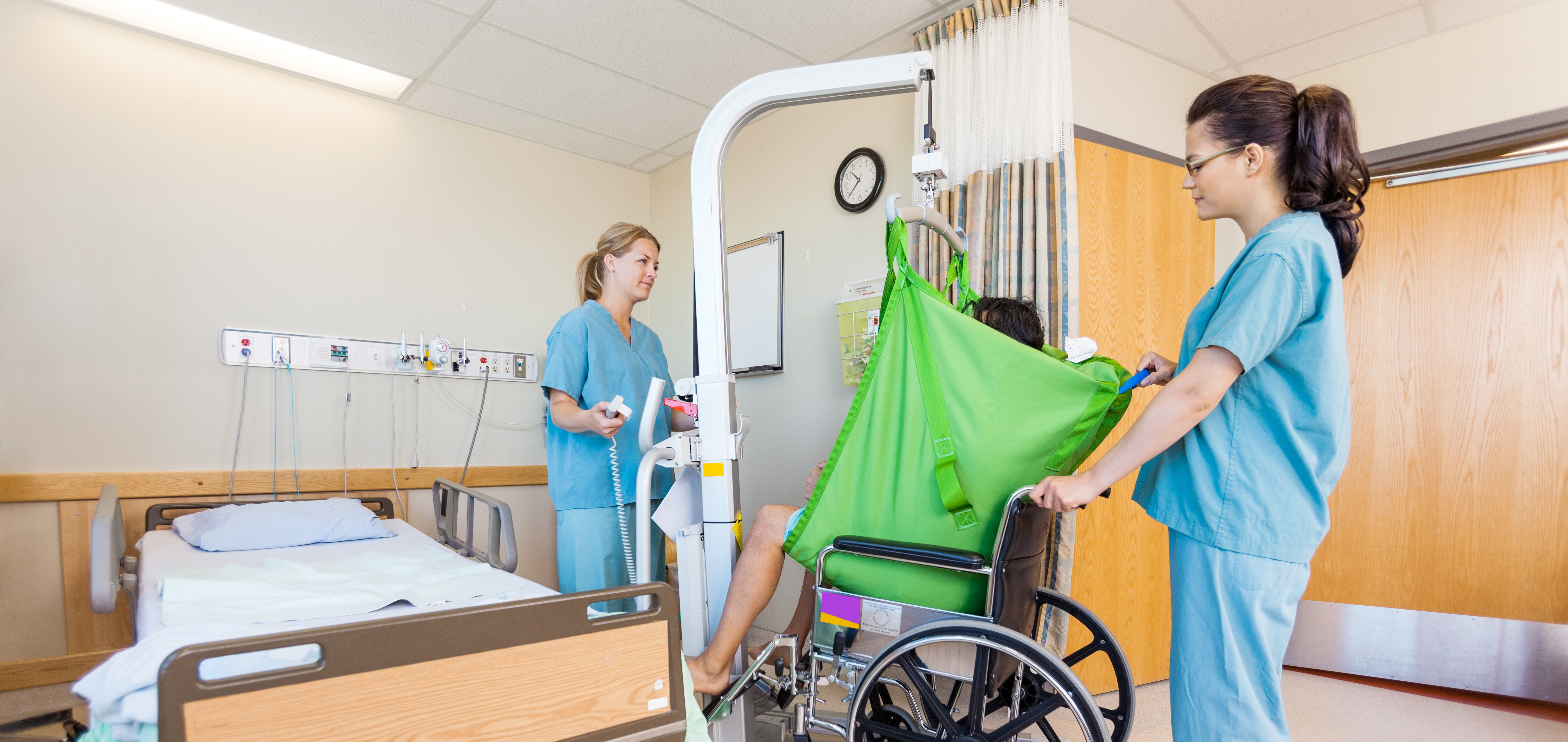For too many years, musculoskeletal injuries from moving patients have been common among practicing nurses. It’s time to put all of our energy— both from an individual and organizational perspective—into prevention. Here are five strategies you can use to prevent injuries from manual patient lifting and moving.
1. Embrace patient handling and mobility equipment as a nursing practice standard
Some clinicians are devoted to more traditional approaches in patient care, even for tasks proven to create significant safety risks for both patients and caregivers. For example, some nurses move patients manually because they believe technology puts a barrier between them and the patient,diminishing the human connection. However, using safe patient handling equipment doesn’t negate the value of human touch. It simply protects nurses and patients from injuries.
2. Become familiar with your facility’s safe patient handling equipment
Many assistive devices are available to help you move patients safely. Make sure you understand how these devices are meant to function so you can help ensure safe patient handling and mobility. For instance, total assist lifts (such as overhead ceiling lifts) and portable devices (for instance, hydrau lic lifts) are meant to assist patients who are physically unable to move themselves. Other lifts, such as sitto- stand devices, require that patients be able to bear their own weight. Understanding how to choose the appropriate device is an important patient safety and caregiver requirement.
3. Gather equipment accessories and check battery status before your shift starts
Some staff nurses don’t use patient handling and mobility equipment because they think it’s too time consuming. But this belief may stem more from the time it takes them to find equipment accessories than the time it takes to use the device. Having accessories available and checking the equipment’s battery status before your shift starts reduces wasted time.
4. Remember basic physics
Safe patient handling equipment doesn’t eliminate the need to assist patients manually. Patients require proper positioning onto devices. Also, emergency situations some times require caregivers to move patients without device assistance. In these situations, keep these basic principles of movement in mind:
• Moving something takes less effort when it’s close to the body than when it’s relatively far.
• Pushing objects is easier than pulling them.
5. Never underestimate patient-care tasks that require physical assistance
Many nurses have suffered debilitating injuries because they underestimated the equipment they would need to assist patients physically. To be on the safe side, use equipment whenever you have the slightest doubt that you could move the patient safely. To help decide if you need to use equipment, address any changes in the patient’s mobility status with the offgoing nurse at change-of-shift report. Also, find out if the patient required handling or mobility equipment at any point during the previous shift or hospital stay. Finally, trust your assessment skills and nursing instincts when determining which type of equipment provides the safest mobility option for both the patient and yourself.
Roric P. Hawkins is the safe patient handling coordinator at Michael E. DeBakey V.A. Medical Center, Houston, Texas.


















